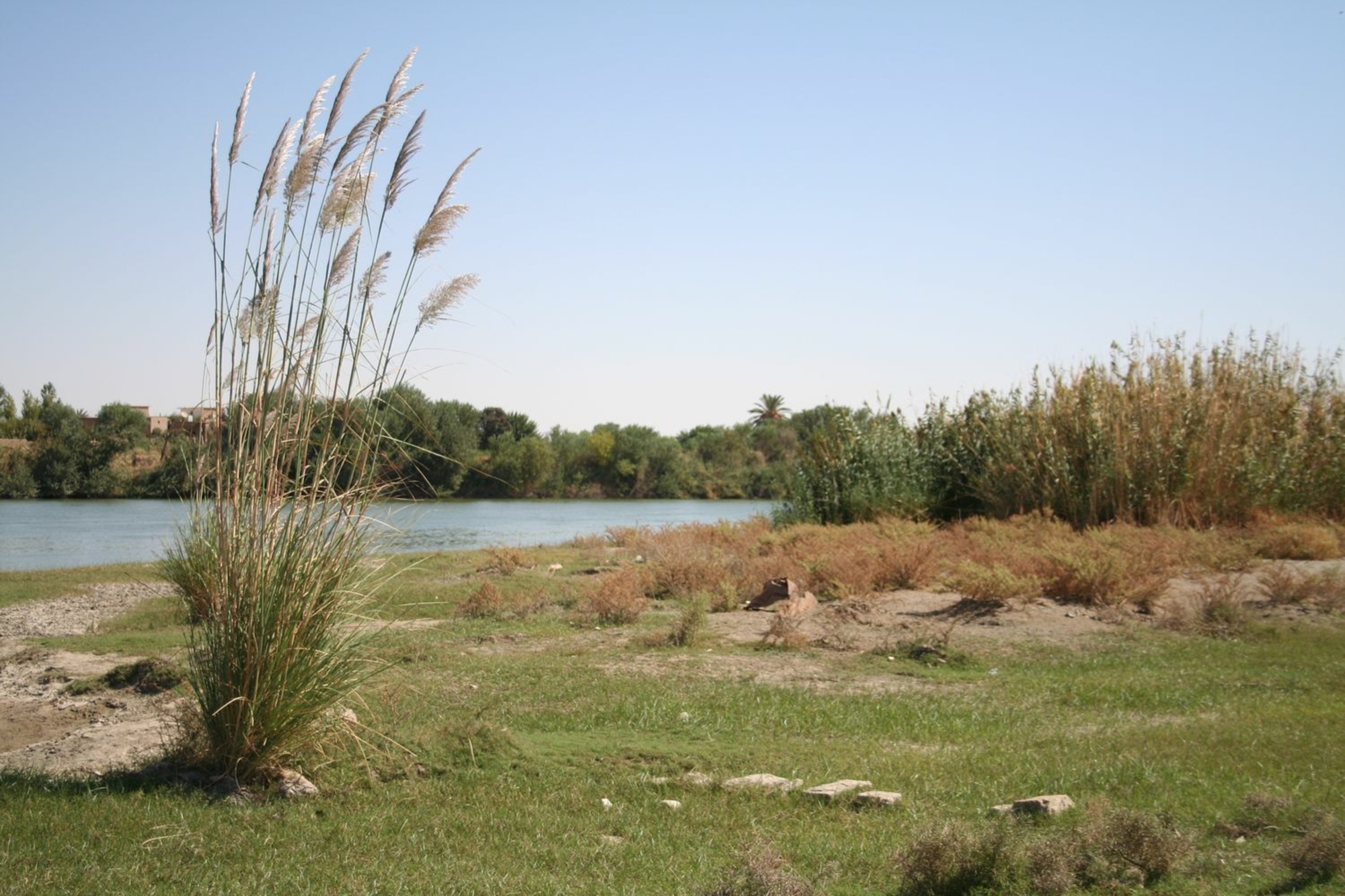
- Home
- Explore the site
- A controlled environment
- Spheres of influence
Mari's location at the heart of the Mesopotamian world explains the diverse cultural influences exerted on the city as early as its foundation. Features specific to the middle Euphrates were constantly mixed with influences from upper Mesopotamia, but also from central and southern Mesopotamia. Ceramic ware characteristic of the north (Ninive V) and centre (scarlet ware) of Mesopotamia, and painted ceramic ware from the Euphrates have circulated from the early 3rd millennium.
Mari: early cultural crossroads
Mari's location at the heart of the Mesopotamian world explains the diverse cultural influences exerted on the city as early as its foundation. Features specific to the middle Euphrates were constantly mixed with influences from upper Mesopotamia, but also from central and southern Mesopotamia. Ceramic ware characteristic of the north and centre scarlet ware of Mesopotamia, and painted ceramic ware from the Euphrates have circulated from the early 3rd millennium.
Neighbour of Sumer and rival of Ebla
Mari City II was one of the great Mesopotamian cities. The texts of City II are written in a Semitic language then in use from central Mesopotamia to western Syria and distinct from the Sumerian language used in southern Iraq. Ceramic ware from this period is very similar to the ceramics then in use in central Mesopotamia, but many cultural characteristics suggest the emergence of a variant of the culture of the Sumerian-Akkadian city-states on the banks of the Euphrates. This is reflected in the impressions made by the seal of the last king of City II, Ishgi-Mari, for example. They combine the conventional scenes of triumph and banqueting in Sumerian art in a highly original way.
A cultural renaissance in the late 3rd millennium
After its destruction by Sargon, Mari enjoyed a renaissance under the authority of a succession of potentates called the shakkanakkus. This led to the emergence of a thriving local culture and the centralisation of production, examples of which have been found across the middle Euphrates.
The Amorite sphere
The arrival of Amorite princes in Mari in the 18th century BCE was associated with the “Babylonisation” of Mari. Both in terms of writing and the production of ceramic wares, Mari helped drive the development of a particularly dynamic cultural community once again centred mainly on central Mesopotamia, in Eshnunna and then Babylon. A city on the banks of the Euphrates, Mari was both a major political and cultural centre and an echo chamber.






